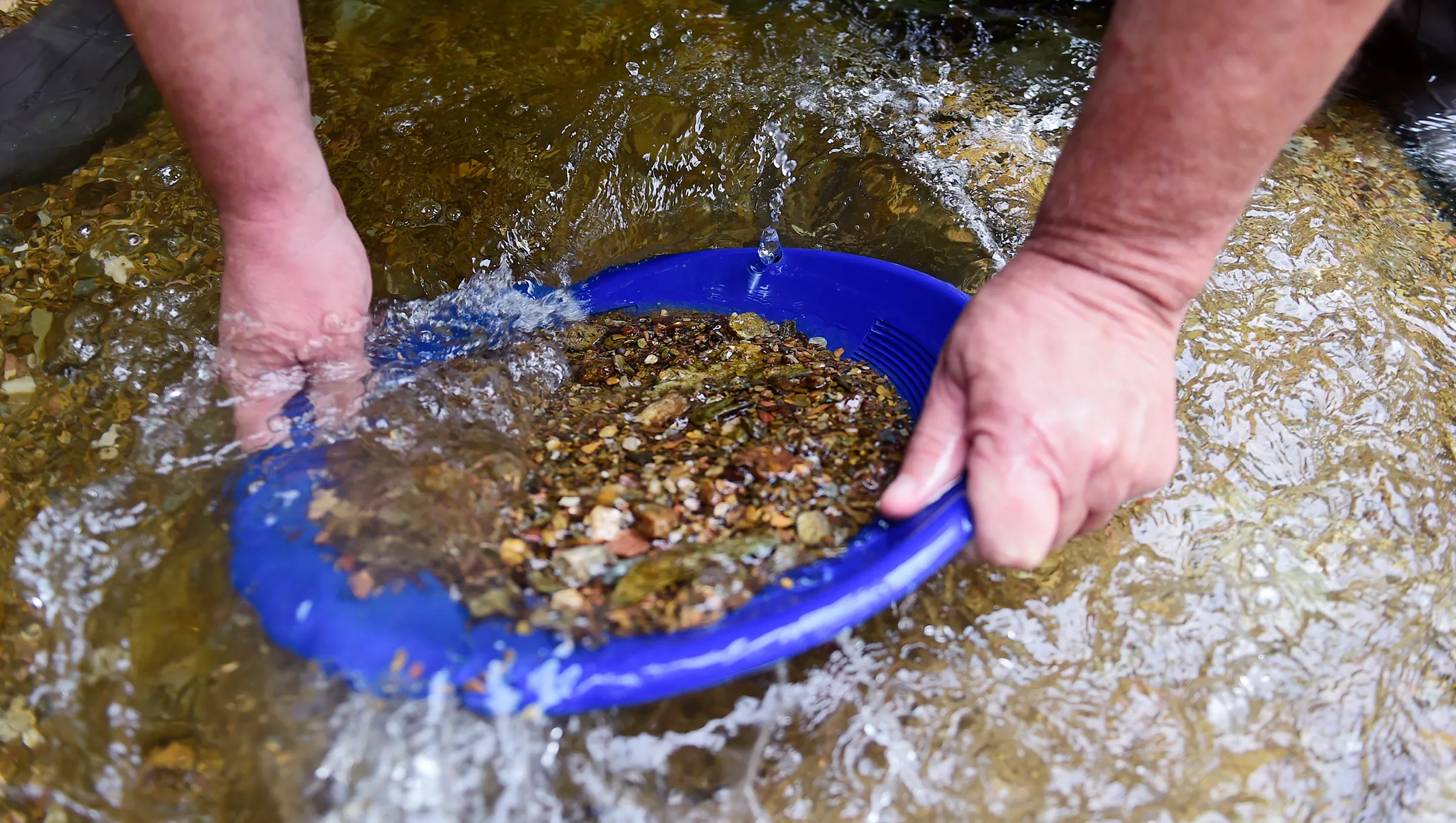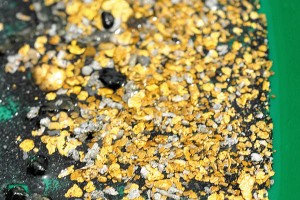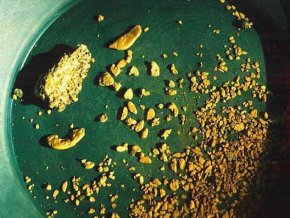
 Depending upon the physical nature of a particular river, you may find gold in many types of places; in some other creeks and streams, perhaps only in a few places. We’ve found gold, for instance, along a sandy bank of a river in Colorado that meandered through a meadow (so we could dig ONLY on the sand bars); then again, we’ve found gold in California along a river where tall, rugged mountains rose from steep-sided banks (could clean out crevices, cut moss, and dig on sand bars).
Depending upon the physical nature of a particular river, you may find gold in many types of places; in some other creeks and streams, perhaps only in a few places. We’ve found gold, for instance, along a sandy bank of a river in Colorado that meandered through a meadow (so we could dig ONLY on the sand bars); then again, we’ve found gold in California along a river where tall, rugged mountains rose from steep-sided banks (could clean out crevices, cut moss, and dig on sand bars).
So . . . study your river, creek or stream carefully before you start to work finding gold flakes or nuggets!
Take time to visualize the flood-stage and to imagine the course the river would have taken then, Build a picture in your mind of the imaginary high-water line and try to “see” where the gold would have settled out.
Remember that after swift water, gold will “fall out” at about a 45 degree angle.
Old-timers know that the largest pebbles are the heaviest. that they drop out sooner than others; that gold (being heaviest of all) will then fall-out with the heaviest rocks. Coarse gold sinks fastest and first; finer gold is carried farther.
 Watch for a sand-laden “cove” which is downstream from some high, protruding bedrock or huge boulders. Both the bedrock and the boulders could have acted as obstacles and caused the current to slow down enough to allow the gold to drop onto the sand.
Watch for a sand-laden “cove” which is downstream from some high, protruding bedrock or huge boulders. Both the bedrock and the boulders could have acted as obstacles and caused the current to slow down enough to allow the gold to drop onto the sand.
Occasionally, clues will tell where the original course of a river flowed. Wherever the current slowed down, its burden of sand would settle quickly. After a bar is started, each year more water would be slowed down at that point until gradually the sand bar would build up enough to force the river to take the easier path and move around it.
When this has occurred, gold can be found by digging in the old river-course at the upstream end of the bar.

As you walk along sand bars, watch for arcs of black sand (there will be gold near it), or roll over large boulders (dig where they’d been), or if the boulders are too big . . . great! . . . dig under the downstream side of them. When they were under water, rushing water would have swirled around the sides to form a small eddy which would have slowed the action of the current and, therefore, dropped gold.
Watch for depressions containing the debris of old cans, rusty iron, nails, and/or lead weights (the kind fishermen use). Any one, or all of these can be a clue to the action of an earlier current and is an indication of a natural receptacle for the heaviest metal of all: gold!